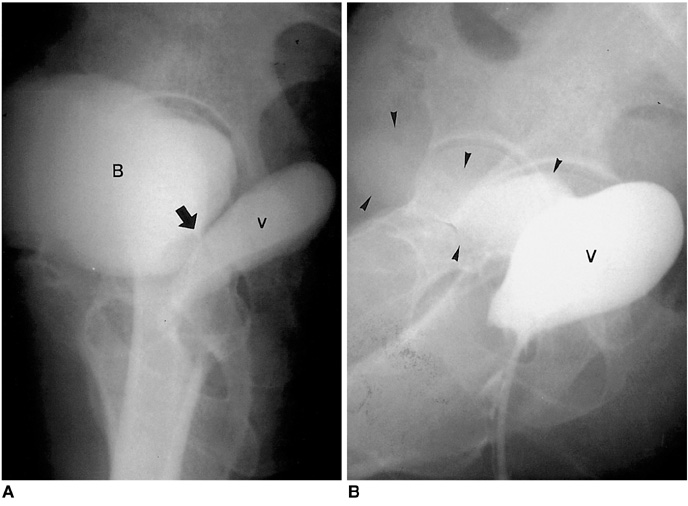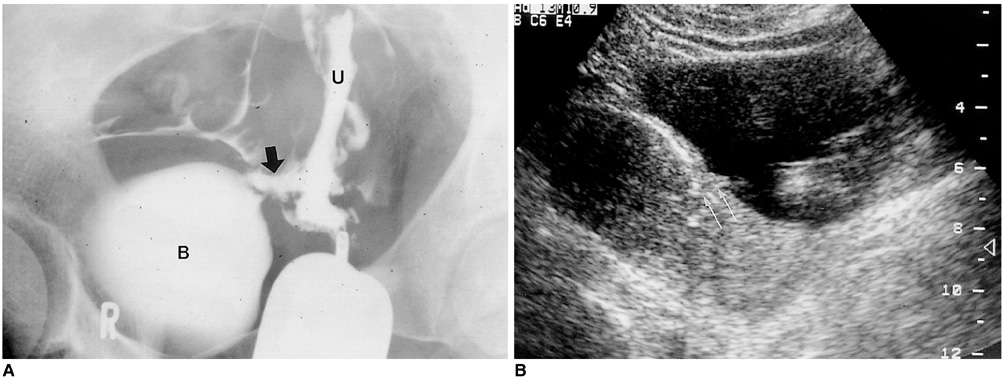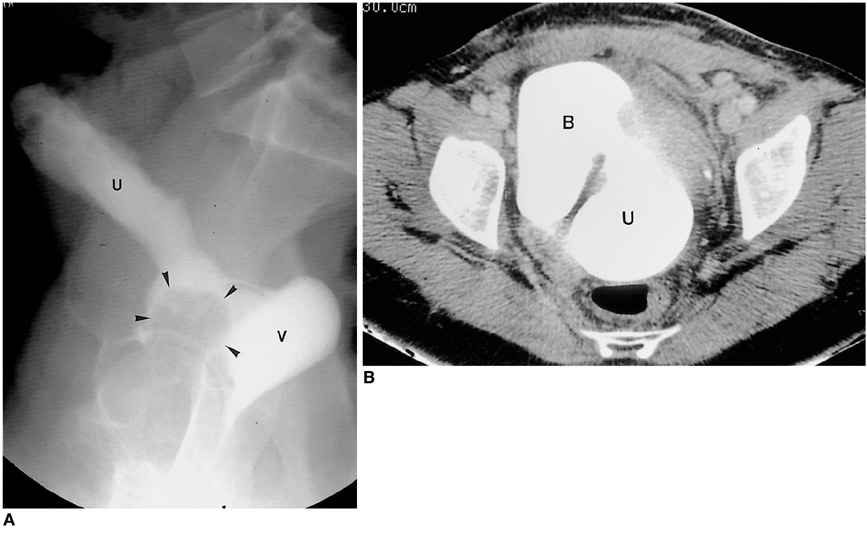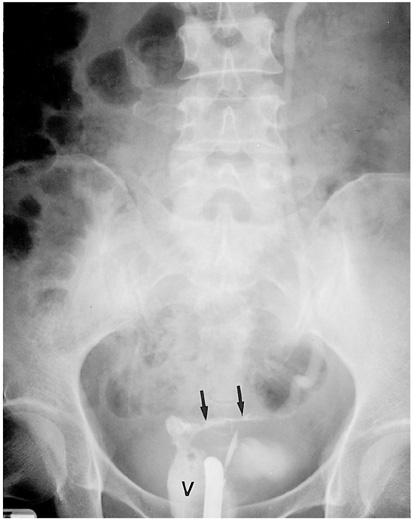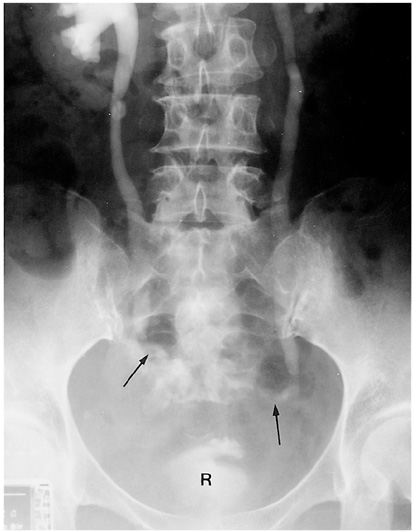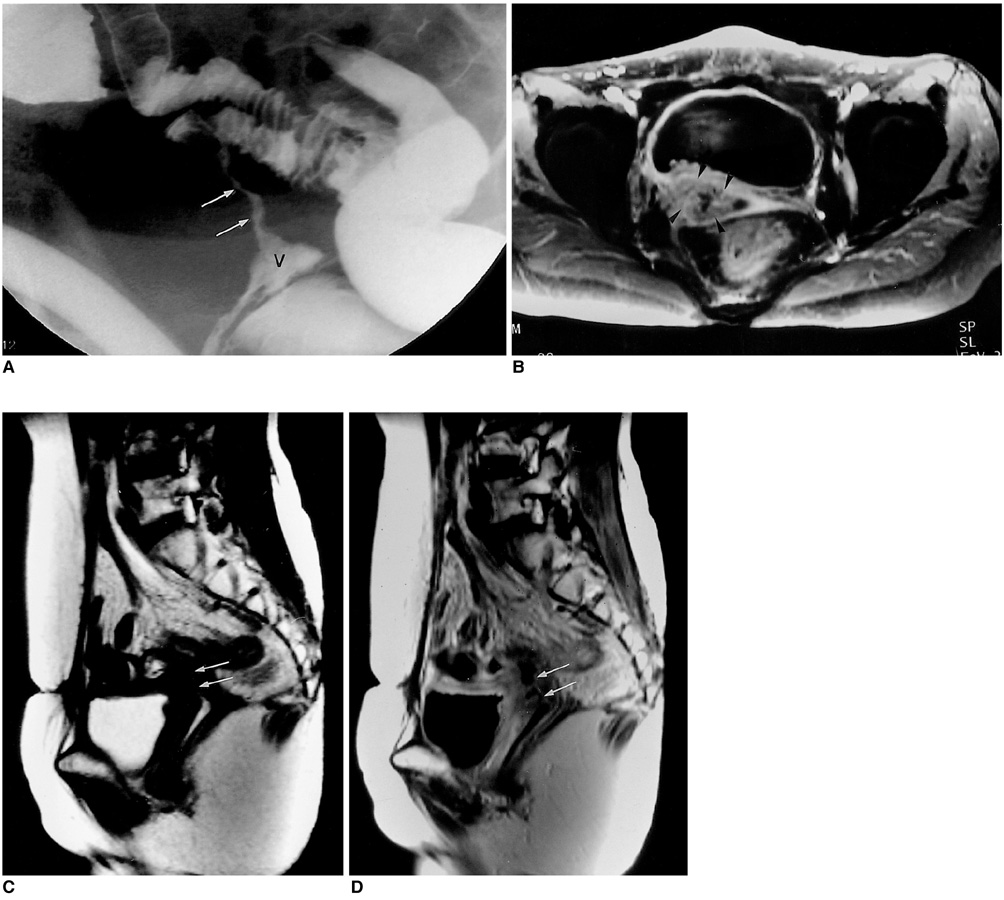Korean J Radiol.
2001 Jun;2(2):97-104. 10.3348/kjr.2001.2.2.97.
Pelvic Fistulas Complicating Pelvic Surgery or Diseases: Spectrum of Imaging Findings
- KMID: 754111
- DOI: http://doi.org/10.3348/kjr.2001.2.2.97
Abstract
- Pelvic fistulas may result from obstetric complications, inflammatory bowel disease, pelvic malignancy, pelvic radiation therapy, pelvic surgery, or other traumatic causes, and their symptoms may be distressing. In our experience, various types of pelvic fistulas are identified after pelvic disease or pelvic surgery. Because of its close proximity, the majority of such fistulas occur in the pelvic cavity and include the vesicovaginal, vesicouterine, vesicoenteric, ureterovaginal, ureteroenteric and enterovaginal type. The purpose of this article is to illustrate the spectrum of imaging features of pelvic fistulas.
Keyword
MeSH Terms
Figure
Reference
-
1. Kuhlman JE, Fishman EK. CT evaluation of enterovaginal and vesicovaginal fistulas. J Comput Assist Tomogr. 1990. 14:390–394.2. Nagy V, Valansky L, Milichovsky I. Urologic complications of gynecologic surgery and their treatment in our clinical data. Ceska Gynekol. 1998. 63:192–195.3. Park BK, Kim SH, Cho JY, Sim JS, Seong CK. Vesicouterine fistula after cesarean section: ultrasonographic findings in two cases. J Ultrasound Med. 1999. 18:441–443.4. Adetiloye VA, Dare FO. Obstetric Fistula: evaluation with ulrasonography. J Ultrasound Med. 2000. 19:243–249.5. Emmert C, Kohler U. Management of genital fistula in patients with cervical cancer. Arch Gynecol Obstet. 1996. 259:19–24.6. Murphy JM, Lee G, Sharma SD, Doble A, Lomas DJ. Vesicouterine fistula: MRI diagnosis. Eur Radiol. 1999. 9:1876–1878.7. Tancer ML. Vesicouterine fistula: a review. Obstet Gynecol Surv. 1986. 41:743–753.8. Iloabachie GC, Njoku O. Vesico-uterine fistula. Br J Urol. 1985. 57:438–439.9. Alapont Perez FM, Gil Salom M, Esclapez Valero JP, et al. Acquired enterovesical fistulas. Arch Esp Urol. 1994. 47:973–979.10. Hwang JC, Ha HK, Weon YC, et al. CT findings of enteric fistula. J Korean Radiol Soc. 1997. 37:1091–1096.11. Bennett JK, Trulock TS, Finnerty DP. Urachal adenocarcinoma presenting as vesicoenteric fistula. Urology. 1985. 25:297–299.12. Selzman AA, Patrick Spirnak J, Kursh ED. The changing management of ureterovaginal fistulas. J Urol. 1995. 153:626–628.13. Cirocco WC, Priolo SR, Golub RW. Spontaneous ureterocolic fistula; a rare complication of colonic diverticular disease. Am Surg. 1994. 60:832–835.14. Husted JW. An unusual case of pyelonephritis: Nephrocolic fistula owing to a ruptured colonic diverticulum. J Urol. 1974. 111:724–726.15. Lee BH, Choe DH, Lee JH, et al. Device for occlusion of rectovaginal fisula: clinical trials. Radiology. 1997. 203:65–69.

